第71章
In the Testacea the body consists of but few parts, the reason being that these animals live a stationary life. For such animals as move much about must of necessity have more numerous parts than such as remain quiet; for their activities are many, and the more diversified the movements the greater the number of organs required to effect them. Some species of Testacea are absolutely motionless, and others not quite but nearly so. Nature, however, has provided them with a protection in the hardness of the shell with which she has invested their body. This shell, as already has been said, may have one valve, or two valves, or be turbinate. In the latter case it may be either spiral, as in whelks, or merely globular, as in sea-urchins.
When it has two valves, these may be gaping, as in scallops and mussels, where the valves are united together on one side only, so as to open and shut on the other; or they may be united together on both sides, as in the Solens (razor-fishes). In all cases alike the Testacea have, like plants, the head downwards. The reason for this is, that they take in their nourishment from below, just as do plants with their roots. Thus the under parts come in them to be above, and the upper parts to be below. The body is enclosed in a membrane, and through this the animal filters fluid free from salt and absorbs its nutriment. In all there is a head; but none of the parts, excepting this recipient of food, has any distinctive name.